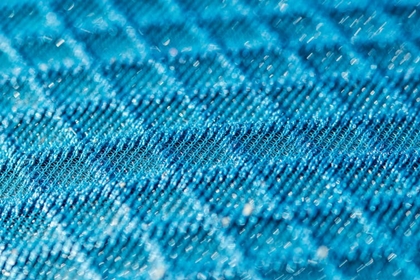|
NOVIDADES
The world-altering coronavirus behind the COVID-19 pandemic is thought to be just 60 nanometres to 120 nanometres in size (read more: Journal of Advanced Research, "COVID-19 infection: Origin, transmission, and characteristics of human coronaviruses"). This is so mind bogglingly small that you could fit more than 400 of these virus particles into the width of a single hair on your head. In fact, coronaviruses are so small that we can’t see them with normal microscopes and require much fancier electron microscopes to study them. How can we battle a foe so minuscule that we cannot see it? One solution is to fight tiny with tiny. Nanotechnology relates to any technology that is or contains components that are between 1nm and 100nm in size. Nanomedicine that takes advantage of such tiny technology is used in everything from plasters that contain anti-bacterial nanoparticles of silver to complex diagnostic machines. Nanotechnology also has an impressive record against viruses and has been used since the late 1880s to separate and identify them. More recently, nanomedicine has been used to develop treatments for flu, Zika and HIV. And now it’s joining the fight against the COVID-19 virus, SARS-CoV-2. If you’re suspected of having COVID, swabs from your throat or nose will be taken and tested by reverse transcription polyrase chain reaction (RT-PCR). This method checks if genetic material from the coronavirus is present in the sample. Despite being highly accurate, the test can take up to three days to produce results, requires high-tech equipment only accessible in a lab, and can only tell if you have an active infection when the test is taken. But antibody tests, which check for the presence of coronavirus antibodies in your blood, can produce results immediately, wherever you’re tested. Antibodies are formed when your body fights back against a virus. They are tiny proteins that search for and destroy invaders by hunting for the chemical markers of germs, called antigens. This means antibody tests can not only tell if you have coronavirus but if you have previously had it. Antibody tests use nanoparticles of materials such as gold to capture any antibodies from a blood sample. These then slowly travel along a small piece of paper and stick to an antigen test line that only the coronavirus antibody will bond to. This makes the line visible and indicates that antibodies are present in the sample. These tests are more than 95% accurate and can give results within 15 minutes. But there are some limitations (read more: Frontiers in Immunology, "Nanoparticle Vaccines Against Infectious Diseases") in that typical vaccine material can prematurely break down in the bloodstream and does not always reach the target location, reducing the efficiency of a vaccine. One solution is to enclose the vaccine material inside a nanoshell by a process called encapsulation (read more: EXCLI Journal, "Nanoencapsulation for drug delivery"). These shells are made from fats called lipids and can be as thin as 5nm in diameter, which is 50,000 times thinner than an egg shell. The nanoshells protect the inner vaccine from breaking down and can also be decorated with molecules that target specific cells to make them more effective at delivering their cargo. This can improve the immune response of elderly people to the vaccine (read more: ACS Nano, "Nanotechnology for COVID-19: Therapeutics and Vaccine Research"). And critically, people typically need lower doses of these encapsulated vaccines to develop immunity, meaning you can more quickly produce enough to vaccinate an entire population (read more: Trends in Immunology, "New horizons in adjuvants for vaccine development"). Encapsulation can also improve viral treatments. A major contribution to the deaths of virus patients in intensive care is “acute respiratory distress syndrome”, which occurs when the immune system produces an excessive response (read more: ACS Nano, "Toward Nanotechnology-Enabled Approaches against the COVID-19 Pandemic"). Encapsulated vaccines can target specific areas of the body to deliver immunosuppressive drugs directly to targeted organs and helping regulate our immune system response. New fabrics made from nanofibres 100nm thick and coated in titanium oxide can catch droplets smaller than 1,000nm and so they can be destroyed by ultraviolet (UV) radiation from sunlight. Masks, gloves and other personal protective equipment (PPE) made from such fabrics can also be washed and reused, and are more breathable.  New fabrics made from coated nanofibres could produce better PPE. Image: AnnaVel/Shutterstock
Graphene isn’t reserved for fabrics either. Nanoparticles could be placed on surfaces in public places that might be particularly likely to facilitate transmission of the virus (read more: Current Research in Green and Sustainable Chemistry, "Tackling COVID-19 pandemic through nanocoatings: Confront and exactitude"). These technologies are just some of the ways nanoscience is contributing to the battle against COVID-19. While there is no one answer to a global pandemic, these tiny technologies certainly have the potential to be an important part of the solution. By Josh Davies, PhD Candidate in Chemistry, Cardiff University. Posted: September 08, 2020
|
|||||||||||||||||||||||||